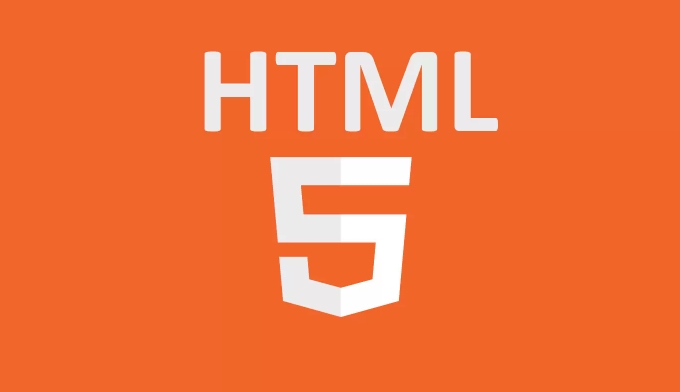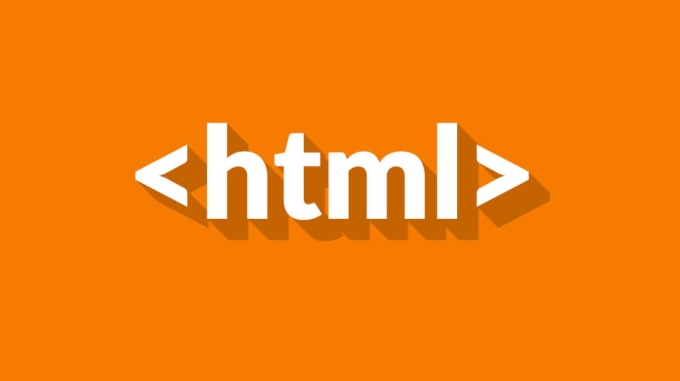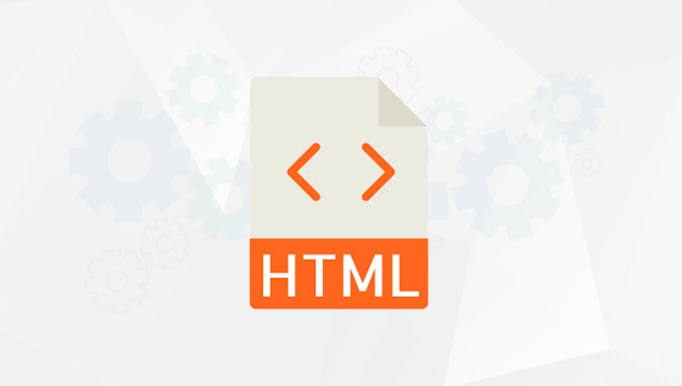There are two main ways to clear localStorage in HTML5. First, use localStorage.clear() to clear all data, which is suitable for situations where all storages under the current domain name need to be deleted at one time; second, use localStorage.removeItem('keyName') to delete data with the specified key name, which is used to clear only specific data items. In addition, it can also be combined with event listening to realize automatic cleaning when page loading or user operations, such as performing deletion or binding logout button click event trigger clearing when page loading. It should be noted that localStorage data is persistently stored and will always exist if it is not cleared. Data is isolated between different domain names. The clear() method will delete all data and is not recoverable. It should be used with caution.

There are several ways to clear localStorage in HTML5, depending on whether you want to clear all data or a specific data item. Below are some commonly used cleaning methods that are directly available.

Clear all localStorage data
If you want to clear all localStorage data stored in the user's browser at one time, you can use it directly:
localStorage.clear();
This method will delete all data stored through localStorage under the current domain name. Note that it will not affect the data of other websites and will not prompt users to confirm, so be careful when using it.

Delete the specified key data
If you want to clear only one data, instead of all, you can use:
localStorage.removeItem('keyName');
Replace 'keyName' with the key name you actually store. For example, you used it before:

localStorage.setItem('username', 'JohnDoe');
Then you can use:
localStorage.removeItem('username');
Come and delete it separately.
Automatically clean up when the page is loaded (optional)
Sometimes we want to clean up some old data when the page is loaded, such as the user does not want to retain the previous cache information after logging out. You can add clear logic to the JavaScript initialization code:
window.addEventListener('load', function() {
localStorage.removeItem('token');
});Or if you are developing a logout function, you can trigger clearing when you click the "Login" button:
document.getElementById('logoutBtn').addEventListener('click', function() {
localStorage.removeItem('authToken');
window.location.href = '/login.html';
});This way, the user experience will be cleaner and avoid the residual data affecting subsequent operations.
Things to note
-
localStorageis persistent, and if it is not cleared, the data will always exist. -
localStoragebetween different domain names are isolated and cannot be accessed from each other. - Using the
clear()method will clear all data and cannot be restored. It is recommended to call it if necessary. - If it is just a temporary test, you can also manually view and delete it through the browser developer tools (Application panel).
Basically, that's all. The operation is not complicated but it is easy to ignore details. For example, accidentally deleting or poor clearing of range control may lead to loss of user data.
The above is the detailed content of How to clear localStorage in HTML5?. For more information, please follow other related articles on the PHP Chinese website!

Hot AI Tools

Undress AI Tool
Undress images for free

Undresser.AI Undress
AI-powered app for creating realistic nude photos

AI Clothes Remover
Online AI tool for removing clothes from photos.

Clothoff.io
AI clothes remover

Video Face Swap
Swap faces in any video effortlessly with our completely free AI face swap tool!

Hot Article

Hot Tools

Notepad++7.3.1
Easy-to-use and free code editor

SublimeText3 Chinese version
Chinese version, very easy to use

Zend Studio 13.0.1
Powerful PHP integrated development environment

Dreamweaver CS6
Visual web development tools

SublimeText3 Mac version
God-level code editing software (SublimeText3)

Hot Topics
 What is Microdata? HTML5 Explained
Jun 10, 2025 am 12:09 AM
What is Microdata? HTML5 Explained
Jun 10, 2025 am 12:09 AM
MicrodataenhancesSEOandcontentdisplayinsearchresultsbyembeddingstructureddataintoHTML.1)Useitemscope,itemtype,anditempropattributestoaddsemanticmeaning.2)ApplyMicrodatatokeycontentlikebooksorproductsforrichsnippets.3)BalanceusagetoavoidclutteringHTML
 Microdata in HTML5: The Key to Better Search Engine Ranking
Jun 12, 2025 am 10:22 AM
Microdata in HTML5: The Key to Better Search Engine Ranking
Jun 12, 2025 am 10:22 AM
MicrodatasignificantlyimprovesSEObyenhancingsearchengineunderstandingandrankingofwebpages.1)ItaddssemanticmeaningtoHTML,aidingbetterindexing.2)Itenablesrichsnippets,increasingclick-throughrates.3)UsecorrectSchema.orgvocabularyandkeepitupdated.4)Valid
 Audio and Video: HTML5 VS Youtube Embedding
Jun 19, 2025 am 12:51 AM
Audio and Video: HTML5 VS Youtube Embedding
Jun 19, 2025 am 12:51 AM
HTML5isbetterforcontrolandcustomization,whileYouTubeisbetterforeaseandperformance.1)HTML5allowsfortailoreduserexperiencesbutrequiresmanagingcodecsandcompatibility.2)YouTubeofferssimpleembeddingwithoptimizedperformancebutlimitscontroloverappearanceand
 Audio and Video : What about browser compatibility?
Jun 11, 2025 am 12:01 AM
Audio and Video : What about browser compatibility?
Jun 11, 2025 am 12:01 AM
Browser compatibility can ensure that audio and video content works properly in different browsers by using multiple formats and fallback strategies. 1. Use HTML5 audio and video tags and provide multiple format sources such as MP4 and OGG. 2. Consider automatic playback and mute strategies and follow the browser's policies. 3. Handle cross-domain resource sharing (CORS) issues. 4. Optimize performance and use adaptive bit rate streaming media technologies such as HLS.
 Audio and Video: can i record it?
Jun 14, 2025 am 12:15 AM
Audio and Video: can i record it?
Jun 14, 2025 am 12:15 AM
Yes,youcanrecordaudioandvideo.Here'show:1)Foraudio,useasoundcheckscripttofindthequietestspotandtestlevels.2)Forvideo,useOpenCVtomonitorbrightnessandadjustlighting.3)Torecordbothsimultaneously,usethreadinginPythonforsynchronization,oroptforuser-friend
 What is the purpose of the input type='range'?
Jun 23, 2025 am 12:17 AM
What is the purpose of the input type='range'?
Jun 23, 2025 am 12:17 AM
inputtype="range" is used to create a slider control, allowing the user to select a value from a predefined range. 1. It is mainly suitable for scenes where values ??need to be selected intuitively, such as adjusting volume, brightness or scoring systems; 2. The basic structure includes min, max and step attributes, which set the minimum value, maximum value and step size respectively; 3. This value can be obtained and used in real time through JavaScript to improve the interactive experience; 4. It is recommended to display the current value and pay attention to accessibility and browser compatibility issues when using it.
 Adding Audio and Video to HTML: Best Practices and Examples
Jun 13, 2025 am 12:01 AM
Adding Audio and Video to HTML: Best Practices and Examples
Jun 13, 2025 am 12:01 AM
Use and elements to add audio and video to HTML. 1) Use elements to embed audio, make sure to include controls attributes and alternate text. 2) Use elements to embed video, set width and height attributes, and provide multiple video sources to ensure compatibility. 3) Add subtitles to improve accessibility. 4) Optimize performance through adaptive bit rate streaming and delayed loading. 5) Avoid automatic playback unless muted, ensuring user control and a clear interface.
 HTML audio and video: Examples
Jun 19, 2025 am 12:54 AM
HTML audio and video: Examples
Jun 19, 2025 am 12:54 AM
Audio and video elements in HTML can improve the dynamics and user experience of web pages. 1. Embed audio files using elements and realize automatic and loop playback of background music through autoplay and loop properties. 2. Use elements to embed video files, set width and height and controls properties, and provide multiple formats to ensure browser compatibility.






